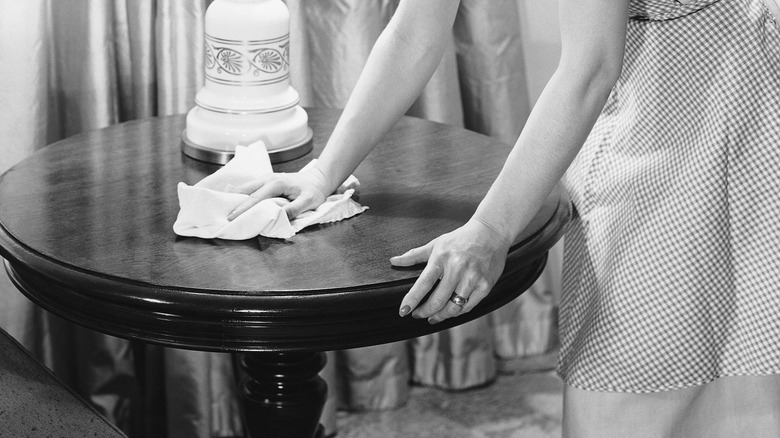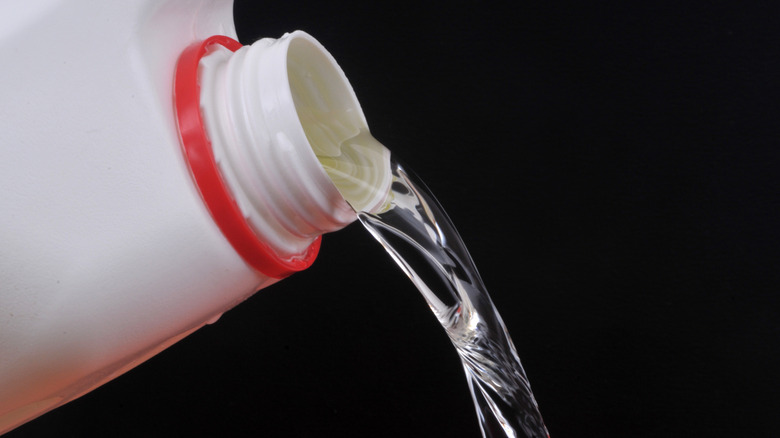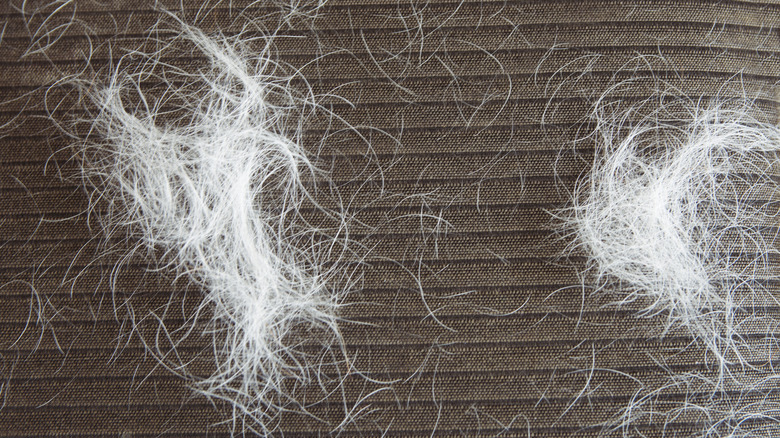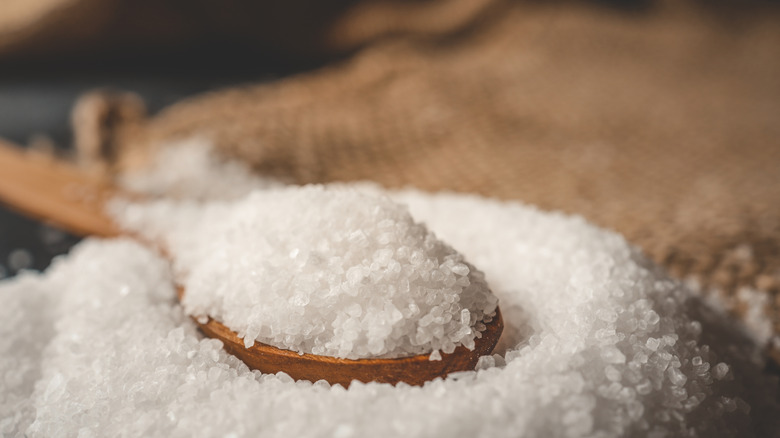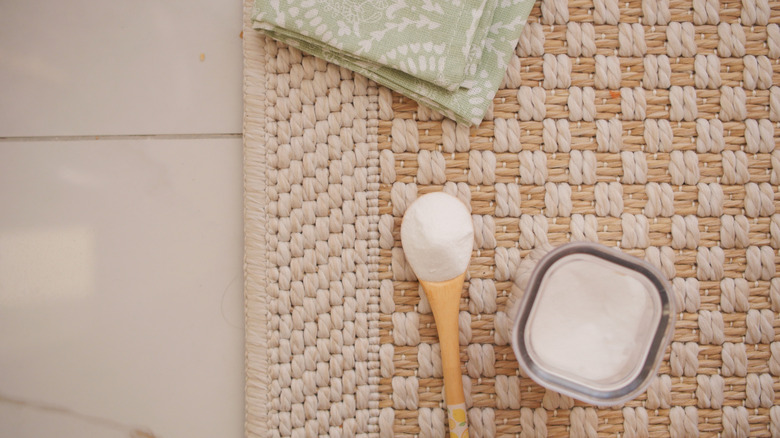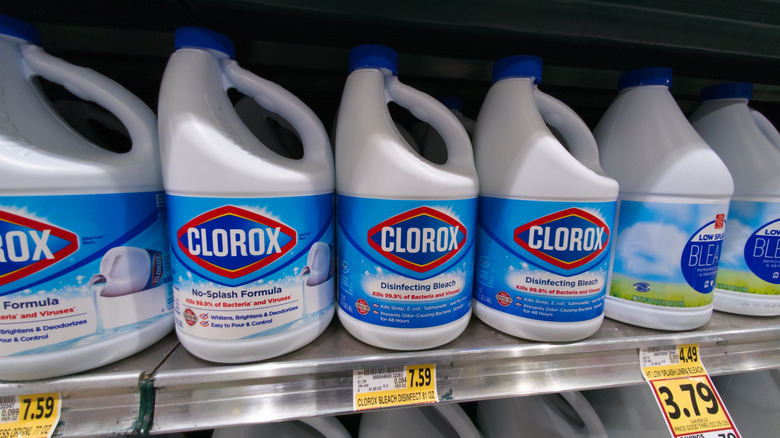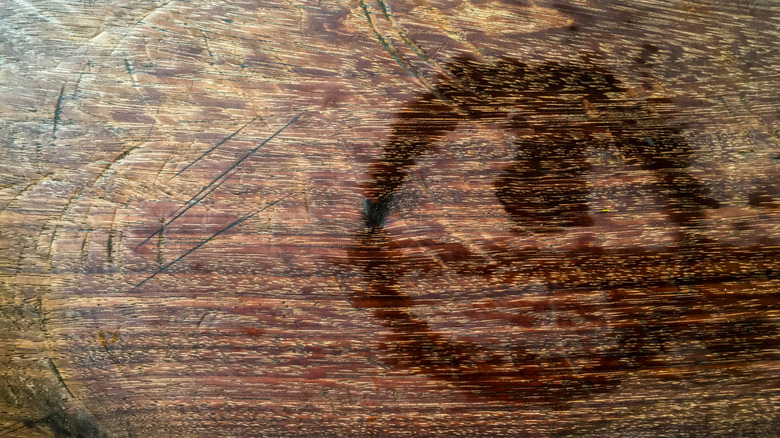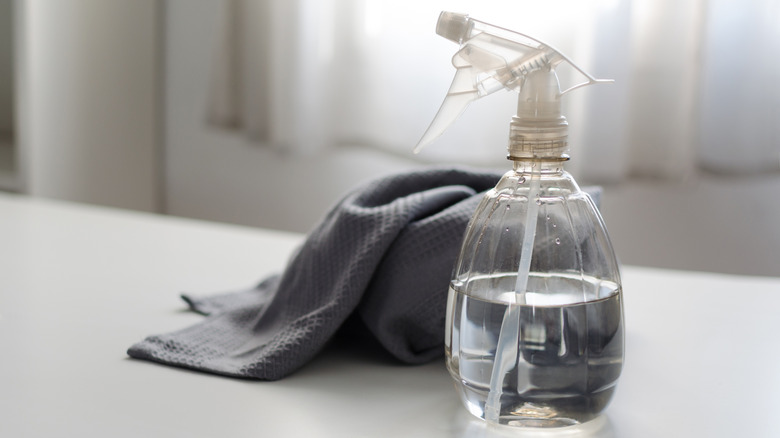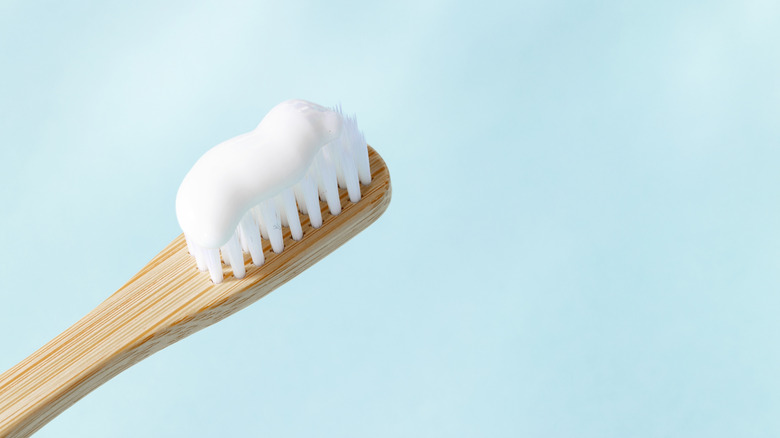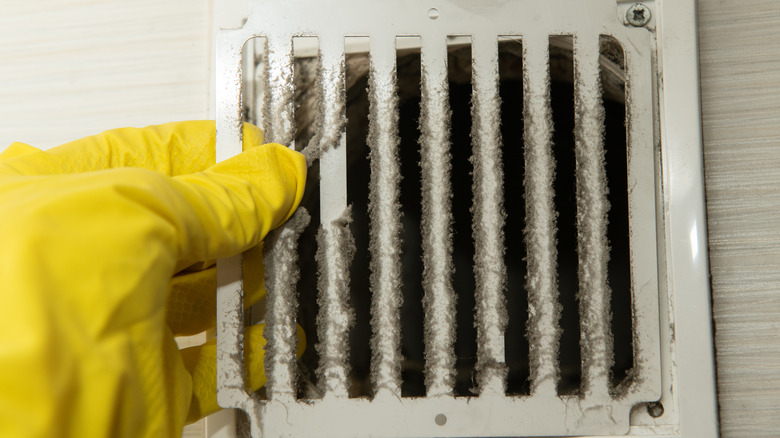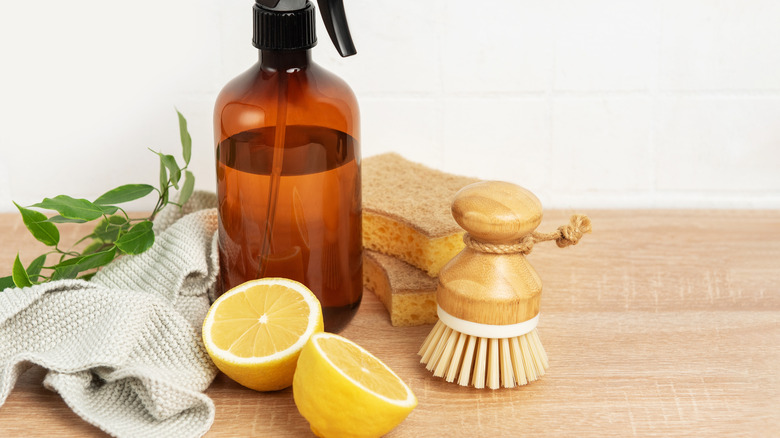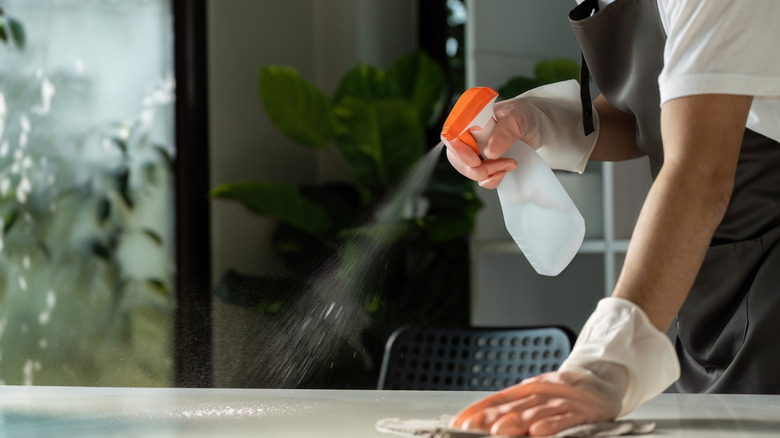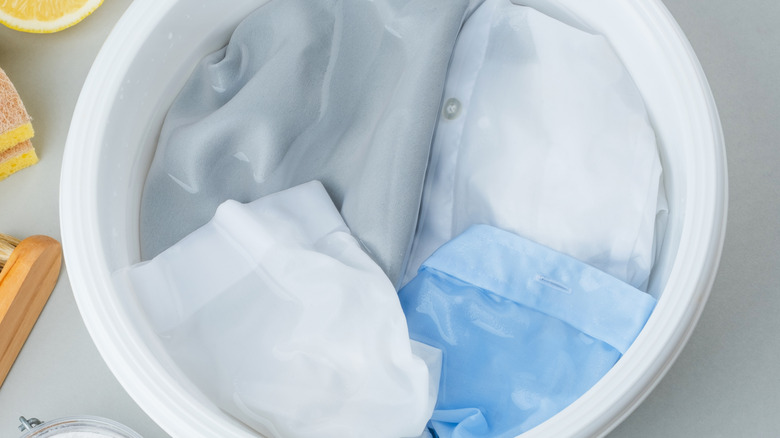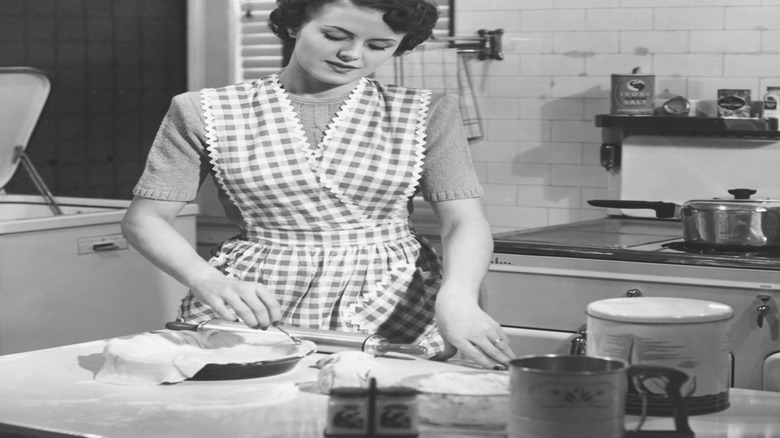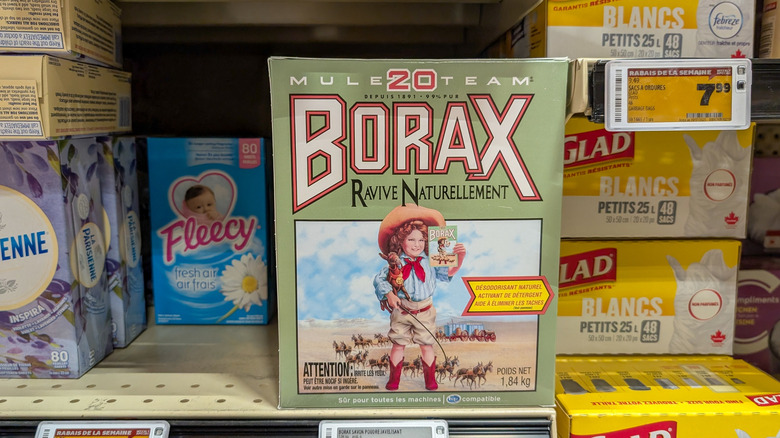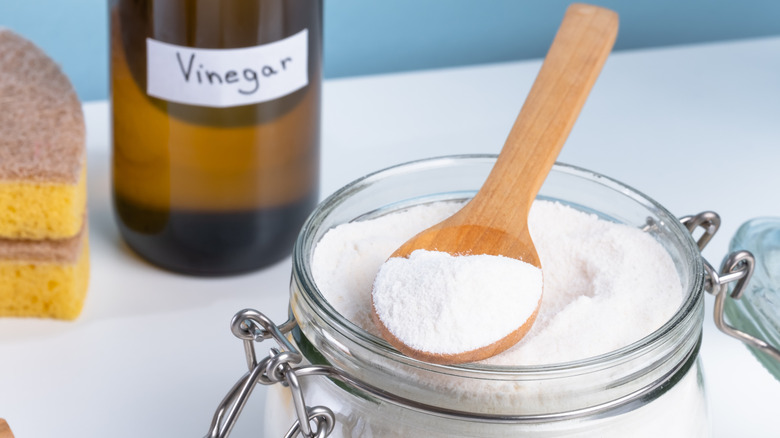14 Vintage Cleaning Rules That Deserve A Comeback (& One That Doesn't)
We may receive a commission on purchases made from links.
Back in our grandparents' day, cleaning didn't rely on endless aisles of chemical sprays or fancy gadgets. Instead, they leaned on simple, clever tricks — the kind of homemade solutions and handy habits that kept things in order, which were passed from one generation to the next. Many of these methods, once detailed in household guides and home economics courses, became the foundation of home cleaning across the country.
The problem, though, is that as we have moved through the decades, and technology has infiltrated most of our daily lives, so many of these cleaning traditions have faded away. Today, as more people look for sustainable and less toxic alternatives for keeping their homes spotless, we are once again taking a look at the practices of the past. If they worked for our grandparents, who relied on common sense and a bit of elbow grease, there's no reason they can't work for us, too. So, in this article, we shine the light on vintage cleaning rules that deserve a comeback, even if we are in the age of AI and smart homes. From the power of white vinegar for home cleaning to the 1-minute rule, here's what we hope to see more of.
Using bleach to keep linen white — but gently
Since the early 20th century, bleach has been a household staple for keeping linens bright and spotless, though it was often harsh on fabrics and required careful handling. Housewives and cleaners would soak sheets, tablecloths, and towels in strong chlorine solutions to restore whiteness, sometimes at the risk of weakening fibers or leaving lingering odors. It still has its place today, often being used to clean hard surfaces like bathtubs and sinks. What about using it for linen, though?
The key to success lies in how you use it. We now know that using it undiluted risks damaging your linen, but if you are looking for that crisp linen whiteness, you can still use it. If bleach is your only solution, start by checking the labels of the linen to see that there is no warning against using bleach — some fabrics won't react well. Then, follow the bottle instructions and mix it with water, and then test it by dipping a cotton swab in the solution of bleach and using it on an inside seam. If there are no issues, then you are good to go. Bleach can help keep your linens stain-free, white, and clean.
Using latex or rubber to remove pet hair
Pet hair has long been the bane of clean upholstery and rugs, and households as far back as the 1940s relied on a surprisingly simple tool: a wet rubber sponge. By rubbing the wet sponge over fabric, it would gather stray hairs that vacuum cleaners of the era often missed. It was an effective and affordable way to keep pet hair under control. Today, the principle is the same, but we have more versatile options. Rubber gloves, when slightly dampened, allow you to swipe across couches, chairs, and rugs, attracting pet hair to the surface that is then easy to remove. Rubber brooms also work wonders on larger carpeted areas, combining friction and static to lift hairs without damaging fibers.
To tackle pet hair now, start by slightly wetting your chosen rubber tool and running it over the affected surface in a consistent motion. Gather the hair into clumps and dispose of them before repeating as necessary. This simple technique works on a variety of surfaces, from leather furniture to thick area rugs.
Using salt as an emergency stain remover
Long before commercial stain removers crowded store shelves, our grandparents and those before them turned to everyday kitchen staples to handle unexpected spills. Salt, in particular, was a trusted ally in soaking up fresh stains during dinner parties or busy household meals. As far back as the 1830s, Lydia Maria Child's "The American Frugal Housewife" recommended sprinkling salt on a spill to absorb moisture and prevent the stain from setting. While we may have far more powerful science-backed solutions today, salt still has its place at the stain crime scene. That's because the salt will absorb some of the stain and delay the setting process. Importantly, this buys you some time to grab the powerful stuff.
If you are at the dinner table and your tomato pasta slides off your fork on its route to your mouth, take some salt and generously sprinkle it over the affected area. Let it sit for several minutes to draw out moisture, then gently brush or shake off the residue. If it's extra messy, first place a paper towel on it to draw up the excess liquid — then add the salt. Once you've "a-salted" the stain, your trusted stain remover can then do its job.
Using the power of baking soda for multiple uses
Baking soda, also known as natron, has been a trusted product for centuries, dating back to ancient Egyptian times when it was used as a soap-like cleaning agent and for general household care. By the 1970s, it had earned a reputation in American homes as a versatile laundry booster, helping to brighten whites, soften fabrics, and neutralize odors. Its natural alkalinity allows it to tackle grease, grime, and even stubborn stains, making it a true multitasker in the home.
There's no reason why you can't bring some of the old into the new by using baking soda for cleaning in your home today. To make the most of it, sprinkle it directly on carpets or upholstery to absorb odors before vacuuming, or mix it with water to form a paste for scrubbing sinks, stovetops, and counters. It can also be added to laundry loads to boost detergent performance and brighten fabrics naturally.
Regularly disinfecting hard surfaces with bleach-based products
This is a vintage cleaning rule that still applies as much today as it did back in the 1940s and '50s. Long before the invention of modern sanitizers and antibacterial sprays, households in the '40s and '50s relied on products like Clorox to keep more than just laundry clean. Hard, non-porous surfaces such as countertops, sinks, and kitchen tables are often hotspots for germs, and a strong sprinkle of bleach powder, mixed with water, was once the go-to method for deep cleaning.
Today, pre-mixed liquid bleach products are more common, but a powdered bleach is still good to have on hand. It's easier to control the strength of your cleaning solution with a powdered bleach, and it has a longer shelf life. But, you should avoid it on delicate or porous surfaces because it can cause scratches due to abrasive bleach crystals. Choose a bleach-based disinfectant that is suitable for the surfaces you're looking to clean, and follow the instructions carefully to avoid overexposure or damage.
Using oxalic acid to remove water rings and stains on wood
Oxalic acid has long been a product that restoration shops have used in restoring furniture. It is particularly effective in removing dark spots and discoloration from wood, where its use results in freshening the wood color. It's also great at removing water rings from wood. Just note that this chemical is toxic in its concentrated form, so eye and hand protection are necessary when working with this form of the product.
To use it today, safety should be your number one priority. We would recommend you buy Oxalic acid packaged for stain removal and then follow the safety instructions carefully. Oxalic acid comes in crystals, so you'll need to start by dissolving it in hot water as per the packaging. Then, once it's diluted, brush the wood surface with the mixture. Go across the full surface and not just the stain. Let it dry back to crystal form and then wash it off safely. The wood should now be stain-free.
White vinegar for rust removal
Long before specialized rust removers filled store shelves, households relied on the simple power of white vinegar to tackle corrosion on metal. How does white vinegar remove rust? Well, the magic is in its natural acidity (acetic acid) that reacts with iron oxide, breaking down rust and loosening it from the surface. Then, all that's needed is to scrub it away. So, before you make the trip down to your local store to pick up that overpriced rust remover, open up your kitchen cabinet instead.
All you need to do is soak small rusted items in white vinegar overnight and let the acetic acid do its thing. After letting it work, scrub gently with a brush or steel wool, then rinse and dry thoroughly to prevent further corrosion. For the scrubbing, check the brush or wool you are using so it won't damage the item you're trying to clean. It's great for your kitchen utensils.
Toothpaste for cleaning a variety of stains
Considering that toothpaste is specifically designed to clean your teeth and, in many cases, remove dental stains, it makes sense that it's effective as a household cleaner as well. Do you remember your grandma using toothpaste to clean her jewelry or to scrub stains out of white shirts? The secret to the toothpaste is the mild abrasiveness. This isn't just folklore — studies have been carried out, and the results are surprisingly positive. Yes, Gran, you were right.
To try this at home, make sure you choose a white paste and not the gel products that are mostly marketed today. Taking a clean and dry cloth, squeeze a decent amount of the white toothpaste onto it. You'll then want to rub the cloth in a circular motion on the stain. It's important that you don't press too hard, as you might do damage to the wood. Aim for about one minute of gentle rubbing, and then check if the stain has been removed.
Using car wax to stop dust on air vents
Another vintage tip that is still as effective today as it was many years ago lies in the power of car wax. Over time, dust buildup on air vents is almost unavoidable, especially if you live in more rural areas of the U.S. Even if you're in the city, we humans create dust with our hair and skin alone — let's not get into that, though. An old cleaning hack is to use good old car wax on the air vents to prevent the dust from settling.
The wax acts as a barrier, preventing grime from sticking and making regular cleaning far easier. All you need to do is grab a quality car wax from your local store and give your vents a thorough cleaning with soap and water. Once they've dried, apply the wax to the vents and then place them back in place. As the dust starts to move through the system, the wax will prevent it from sticking. Make sure to use only a small, thin amount, as too much wax can have the opposite effect.
Homemade air fresheners and cleaners
Before aerosol sprays and synthetic scents filled supermarket shelves, many households relied on homemade air fresheners and cleaners to keep their homes smelling fresh and clean. Using ingredients like lemon, vinegar, baking soda, and spices, our grandparents crafted simple but effective air fresheners that didn't just mask odors — they eliminated them. These were often concoctions that were passed down from generation to generation and then became less prominent when big brands launched loud marketing campaigns highlighting the "latest and greatest."
If you're looking for a vintage and natural air freshener in your home, mixing water, vinegar, and a few drops of lavender or citrus oil can create an effective surface cleaner that will leave your counters smelling fresh. Baking soda is a great option to place in a small bowl to neutralize odors in any room or to clean out any unwanted smells in your fridge. Why pay the extra cash for a chemical-infused air freshener when the natural items in your kitchen will do the job just fine?
The one-minute rule
While many vintage cleaning tips date back decades, one modern rule deserves a spot alongside them — the one-minute rule, coined by author Gretchen Rubin in the early 2000s. The idea is refreshingly simple: if a task takes less than a minute to complete, do it immediately. Whether it's hanging up a coat, wiping down a counter, or putting away a dish, tackling these small chores right away prevents clutter from piling up and keeps your home in constant order without overwhelming effort.
The beauty of this rule lies in its practicality. Our grandparents lived by similar principles, often tidying as they went to avoid big cleaning days. Rubin's version adapts that mindset for our busy, fast-paced world. By dealing with quick tasks as they arise, you maintain a sense of calm and control in your space — no scrubbing marathons required. It's proof that good habits, both old and new, are the real secret to a clean and organized home.
Immediately rinsing out stains
This is like the golden rule with a lot of older folks. One of the ways our grandparents used to tackle a stain was to act quickly. As soon as a spill happened, whether it was red wine on a tablecloth or beet juice on a shirt, off they would rush with the item and submerge it in cold water. It didn't work for all stains, but it was a fairly effective cleaning hack. The principle was passed down through generations because it worked, and it's one that still deserves a place in every modern home.
Today, the science backs up what our grandparents already knew. The longer a stain sits, the harder it is to remove. The trick here is to use cold water, as for stains like blood, warm water will actually cause the stain to set. It's the simplest, most affordable cleaning method there is — and it's one that beats procrastination every time
Wearing an apron while cleaning
In decades past, aprons were a common sight in households, worn by those around the home to protect their clothing from the messes of daily chores. From scrubbing ovens to tending gardens or washing dishes, aprons were a simple barrier against stains, grease, and dirt. While they came in all sorts of shapes and sizes and changed over the decades, they were popular.
Today, aprons may seem old-fashioned, but they're still an effective solution for anyone tackling messy tasks, whether that be in the kitchen or in the garden. Whether you're cooking a complicated meal, polishing furniture, or deep-cleaning the bathroom, wearing an apron protects your clothing and allows you to focus on the job at hand without worrying about spills. If you're conscious about style, you'll find a variety of modern options that keep you looking good in the event that an unexpected guest arrives. If you are nostalgic for a time gone by, then by all means haul out Granny's old apron and get to work.
Using borax as a strong alkaline cleaner
Borax has been a trusted household staple for well over a century. It's a naturally occurring mineral salt, sodium tetraborate decahydrate, long valued for its exceptional cleaning and deodorizing power. Traditionally added to laundry detergent or washing soda to boost cleaning performance, it also found use as a pest deterrent (especially against ants and cockroaches) and as a general household deodorizer. Marketed as a "green" product because it contains no phosphates or chlorine, Borax became a fixture in American homes throughout the 20th century. The brand "20 Mule Team Borax," introduced in 1891, helped make it a household name. In recent decades, however, consumer preferences have shifted toward alternative cleaners and detergents.
The good news is that you can still buy it across the country. Like any household cleaning product, borax is safe as long as it is used according to instructions and kept away from children and pets. So, there's no reason why you can't add it into your cleaning routines, provided you follow the safety measures as directed.
Doesn't deserve a comeback: Combining baking soda and vinegar
To close off this list of vintage cleaning rules that we would welcome to see again, here is one that doesn't deserve a comeback — the combination of baking soda and vinegar. For decades the idea seemed foolproof: the fizzing reaction would lift dirt, neutralize odors, and disinfect surfaces. Many home economics books, articles, and DIY cleaning guides recommended this combo as a go-to solution, and it became a staple of "green" cleaning kits.
However, modern science has largely debunked this pairing as an effective cleaner. Because baking soda is alkaline and vinegar is acidic, the two neutralize each other when mixed, cancelling out most of their individual cleaning power. While the fizzy reaction may look satisfying, it doesn't produce the chemical impact needed to remove tough stains or grease. It's best to rather go for one of the vintage hacks we've mentioned above.
